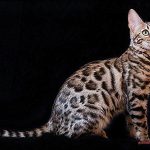Flexibility is a captivating trait that both humans and animals admire. We’ve all heard the phrase “bend it like Beckham,” but have you ever wondered what animal can contort its body in unimaginable ways? Which creature can perform contortionist-like moves that are mesmerizing to watch? Well, prepare to be amazed because the answer may surprise you.
After extensive research and observation, scientists have discovered that the most flexible animal in the world is none other than the octopus. Yes, you read that right – this mysterious and intriguing creature that inhabits the ocean depths has an incredible ability to twist and bend its body in ways beyond human comprehension.
From squeezing through tiny gaps between rocks to escaping from predators by twisting its body into a knot, the octopus has evolved to be one of the most awe-inspiring creatures in the animal kingdom. Its body is incredibly malleable, and it uses this flexibility to its advantage in every aspect of its life, from hunting prey to mating with a partner.
In this blog post, we will dive deeper into the world of these eight-limbed wonders and explore how their remarkable flexibility has made them masters of survival in their underwater habitat. We’ll also take a look at other animals that are equally flexible and compare their abilities to those of our cephalopod friends. Get ready to be wowed by these incredible creatures that roam our planet, and prepare to be inspired by the remarkable adaptability of the animal kingdom.
What Makes Cats the Most Flexible Animal?

Cats are known for their incredible flexibility and agility, making them one of the most fascinating creatures on the planet. But what exactly makes cats the most flexible animal? Let’s take a closer look at their anatomy.
One of the key factors contributing to a cat’s flexibility is their spine. Unlike humans, who have relatively rigid spines, cats have 53 vertebrae that are separated by soft cartilage. This allows them to bend and twist their spine in ways that we can only dream of. Additionally, cats have powerful muscles surrounding their spine, which enable them to move quickly and with precision.
But that’s not all – cats also lack a collarbone. This absence of a bone connecting the shoulder blade to the breastbone gives them an additional level of flexibility in their front legs. Without a collarbone, cats can rotate their front legs in a way that is impossible for animals with this bone. This allows them to squeeze into tight spaces and perform incredible feats of acrobatics.
Another impressive factor contributing to a cat’s flexibility is their exceptional sense of balance. Their inner ear contains tiny fluid-filled canals that help them maintain their balance even when they’re in unusual positions. Combine this with their flexible spine and powerful muscles, and you have an animal that can land on its feet even when falling from great heights.
Cats’ Ability to Jump and Climb
Cats are true acrobats of the animal kingdom, with their ability to jump and climb heights that would make most humans dizzy. But what makes cats so adept at this impressive feat? Let’s explore the physical features and abilities that make cats such skilled climbers and jumpers.

Firstly, cats have a spine that is not only long but also incredibly flexible. With 53 vertebrae compared to our 33, cats can contort their bodies into seemingly impossible positions. This flexibility allows them to twist and turn their bodies in mid-air, making it easier for them to land on their feet after a jump.
Secondly, cats have powerful hind legs that enable them to launch themselves high into the air. They can leap up to six times their body length in a single bound, which is higher than any other animal relative to its size. This impressive feat is made possible by their strong leg muscles and flexible joints.
Thirdly, cats have retractable claws that allow them to grip onto surfaces tightly. These sharp hooks on their paws are particularly useful when climbing trees or other rough surfaces. They also act as anchors, providing stability and balance when jumping or climbing.
Lastly, cats have excellent balance and coordination that helps them navigate narrow ledges and unstable surfaces. Their inner ear structure and advanced proprioceptive abilities allow them to sense changes in their body position and adjust accordingly, ensuring they always land on their feet even in the most challenging of situations.
Cats’ incredible ability to jump and climb not only impresses us but also serves practical purposes in both the wild and domestic settings. In the wild, they use these skills to hunt prey, escape predators, and find shelter in high places. In domestic settings, cats often climb furniture or jump onto countertops to access food or toys.
Cats’ Grooming Habits
Cats are renowned for their immaculate grooming habits, and their flexibility is a key factor in this self-care routine. These feline creatures dedicate up to half of their waking hours to grooming themselves, using their supple spine and limber joints to reach every nook and cranny of their body. They employ their tongue, which is equipped with tiny barbs called papillae, to clean their fur. These barbs work like a comb, removing loose fur, dirt, and debris from their coat with ease.
But cats don’t just groom themselves; they also groom each other as a way of forming social bonds and establishing dominance within the group. This behavior, called allogrooming, helps to cement relationships between cats and reinforce social hierarchy.
Cats’ flexibility is crucial for maintaining their luscious locks as well. Long-haired cats need to keep their fur untangled and free of mats, and they use their hind legs and paws as nimble hands to achieve this. Their dexterity enables them to contort into various positions, even reaching their own ears if needed.
While cats’ grooming habits are impressive, it’s essential for owners to be vigilant about potential over-grooming. Excessive grooming can lead to hair loss, skin irritation, and infections. If you notice your cat excessively grooming or pulling out fur, this may signal stress or anxiety that needs veterinary attention.
Other Animals with Flexibility
When it comes to animals with remarkable flexibility, most people’s minds jump straight to cats and snakes. However, the animal kingdom is full of creatures that possess extraordinary range of motion and adaptability. Let’s explore some of these fascinating animals.
The first animal on our list is the octopus. With its eight arms and lack of a rigid skeleton, this cephalopod can contort its body in endless ways. Its ability to squeeze through tight spaces is particularly impressive, as some species can even fit through a hole the size of a quarter. The octopus is a true master of flexibility.
Next up is the contortionist frog – a South American amphibian with an incredible ability to contort its body into unusual shapes. Its legs and hips are incredibly flexible, allowing it to flatten itself against surfaces and squeeze into tight spaces. This skill comes in handy when it needs to escape predators or catch prey.
The mantis shrimp is another animal known for its flexibility. Despite having a hard exoskeleton, this marine creature has joints that allow it to move its arms and claws in ways that other animals cannot. Its ability to bend and twist its body also helps it maneuver through tight spaces with ease.
Finally, we have the praying mantis – a predatory insect with flexible joints in its legs that allow it to contort its body into unconventional positions. This makes it an expert at catching prey and evading predators.
Snakes: Contortionists of the Animal Kingdom
These fascinating creatures are known for their incredible contortion abilities, which are a result of their unique skeletal and muscular system.
Snakes have a highly flexible vertebral structure that allows them to move in a variety of directions, making it possible for them to slither through narrow spaces and coil around objects with ease. Their bodies are incredibly graceful and fluid, almost like watching a dance.
But what sets snakes apart from other animals is their impressive muscular and skeletal systems. They can stretch and contract their bodies in ways that seem impossible for humans, making them one of the most flexible animals in the world.
Another remarkable ability of some snake species is their capability to dislocate their jaws. This unique trait allows them to swallow prey much larger than their own heads, making them fierce predators in the wild.
Snakes’ flexibility not only helps them hunt and survive but also makes them popular as pets and performers in circuses and shows. However, it’s crucial to remember that snakes are wild animals and should be treated with respect and caution. Handling them without proper training and equipment can be dangerous both for the snake and the handler.
Monkeys: Nimble Climbers and Jumpers
Monkeys are the acrobats of the animal kingdom, renowned for their nimble climbing and jumping abilities. Their lithe fingers and toes allow them to grasp onto even the tiniest branches and swing with ease from one tree to another. But it’s not just their limbs that make them such impressive climbers and jumpers.
Take the spider monkey, for example. These primates have prehensile tails, which they can use like an extra arm to grab onto branches and other objects with remarkable speed and agility. Imagine having a fifth limb that can grab onto anything in your path. Other monkeys, such as macaques and baboons, may not have prehensile tails, but they are still incredibly flexible. They can contort their bodies into all sorts of positions, using their strong arms and legs to navigate their environment.
Monkeys’ powerful leg muscles help them to jump significant distances, allowing them to leap from one tree to another with ease. Their muscular and skeletal systems are perfectly designed for this kind of movement, making them some of the most agile and graceful animals in the world.
But it’s not just their physical abilities that make monkeys stand out. They also have remarkable intelligence and problem-solving skills, enabling them to adapt quickly to new environments. They can learn how to use tools, communicate with each other, and even trick predators.
Fish: Incredible Acrobats in the Water
Take a deep breath and dive into the underwater world of fish, where incredible acrobatics are just another day in their watery playground. Fish are some of the most fascinating creatures on earth, and their flexibility is truly a sight to behold. Unlike other animals, fish possess a unique skeletal structure consisting of interconnected vertebrae that allow them to move their bodies in ways that are simply mind-boggling.
Swimming is where fish demonstrate their incredible flexibility first. They have the ability to move their fins and tails in ways that allow them to navigate water like it’s second nature. Whether they’re swimming in different directions or stopping themselves from moving altogether, fish are masters of the underwater world. Their tails can propel them forward, backward, and even sideways with such grace that it almost seems like they’re dancing.
But that’s not all – fish also showcase their flexibility through their ability to contort their bodies into various shapes. They’re like underwater gymnasts. Eels, for instance, can bend and twist their bodies into tight spaces, making it easy for them to hide from predators or capture prey. Meanwhile, boxfish can puff themselves up by inflating their bodies with water, making it tough for predators to swallow them whole.
Have you ever noticed how some fish change their shape and size depending on their environment? Flounders are experts at blending in with the ocean floor to avoid detection by predators. They’re so good at it that they almost become invisible. And then there are anglerfish who extend a long filament from their heads that resembles a fishing lure, attracting prey towards them. It’s like they’ve got a built-in fishing rod.
hOr0Na1WsHo” >
Conclusion
In conclusion, flexibility is a remarkable trait that has been honed to perfection by various animals to help them survive and thrive in their environments. While cats and snakes are often cited as the most flexible creatures, scientists have uncovered a surprising winner – the octopus. With its lack of a rigid skeleton and eight malleable arms, this cephalopod can contort its body into unimaginable shapes, making it the most flexible animal in the world.
But the octopus isn’t alone in its impressive physical abilities. Other animals with jaw-dropping flexibility include contortionist frogs, mantis shrimps with lightning-fast punches, praying mantises that can rotate their heads 180 degrees, monkeys with prehensile tails for gripping branches like an extra hand, and fish with interconnected vertebrae that allow them to move through tight spaces effortlessly.
Cats’ exceptional flexibility is due to their long and flexible spine, powerful muscles surrounding it, lack of a collarbone that allows them to squeeze through narrow openings effortlessly, retractable claws for gripping surfaces tightly even while upside down or sideways, and advanced sense of balance. This enables them to jump and climb heights that would make most humans dizzy while maintaining immaculate grooming habits.
The animal kingdom never ceases to amaze us with its incredible adaptability and flexibility. These creatures are an inspiration for us all to be more adaptable in our own lives.







